Recent stats by the government’s new department for tepid yellow show that UK solar managed to increase by 7% in 2016 (see this BEIS link )
While this won’t make much of a dent in the giant climate compromise that’s heading our way (and it’s a balloon-hissing 21% less than 2015’s increase), perhaps this increase is not too bad considering the giant lurches of the ships’ deck on which those of us trying to build new solar PV installations have to operate.
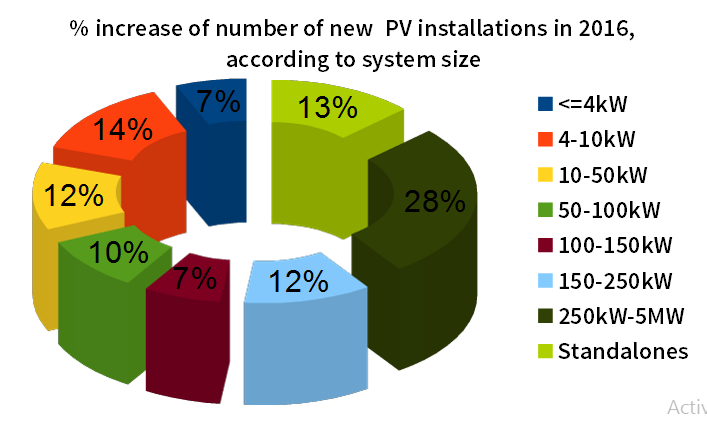
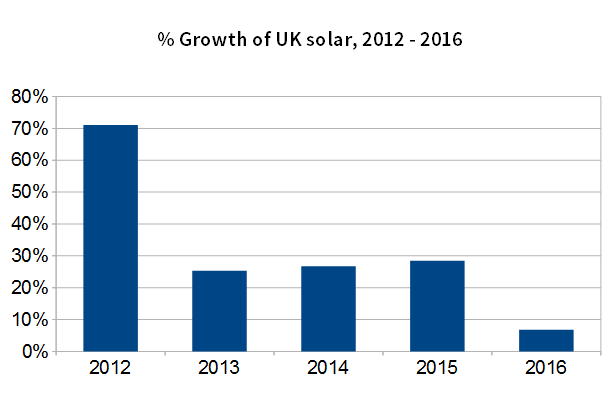
But operate we do, adding 210MW of new solar to the UK last year (that’s roughly three-quarters of a million solar panels). And – crucially – while things have slowed down since the radical changes to the FITs last year, they have not stopped.
In 2016 the big boys of the City and their countryside solar farms (aided by chums with City-sized wallets) added around 100 new field-scale solar plants to the UK. At the other end of the scale 37,000 people added solar to their homes.
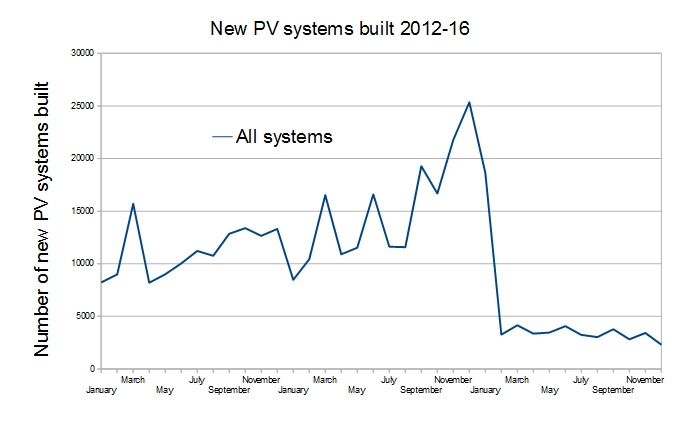
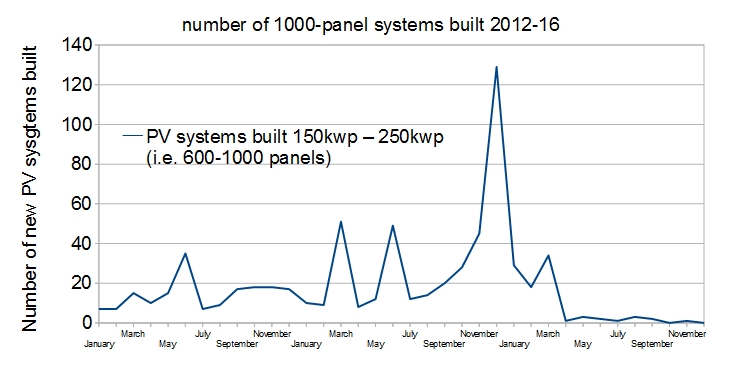
Thus the real impact of 2016s FIT changes was only felt in its full effect by the last two quarters – by the end of the year installations had dropped significantly.
But slowly things progress. While the FIT changes have dropped the installation of new solar installs dramatically, they haven’t killed it. It’s true that the big growth areas of the previous years – notably solar farms – are dead ducks.
Yet plucky homeowners continue to add solar to their houses. And there remains a great opportunity in the churches, schools, factories that people like BEC specialise in.
That’s not to say it’s going to happen overnight. But we are still building new solar systems (check out Brighton Energy Coop’s recent systems here).
And by joining Brighton Energy Coop and others like us, you can add your support to a sector that may be down – but not out.
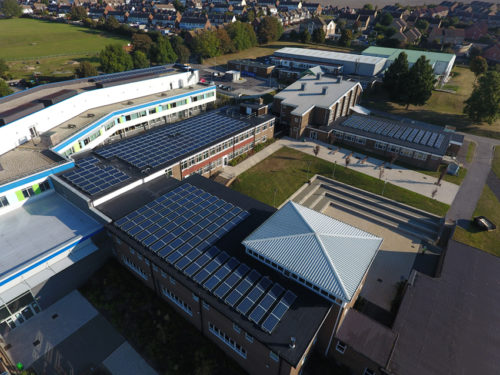
Well done, Will, I agree. You are right that the growth now will come from small installations, on homes, schools, churches, any roof, where a real and sustainable return on capital of 5-10% can be made, which will increase as oil prices rise.